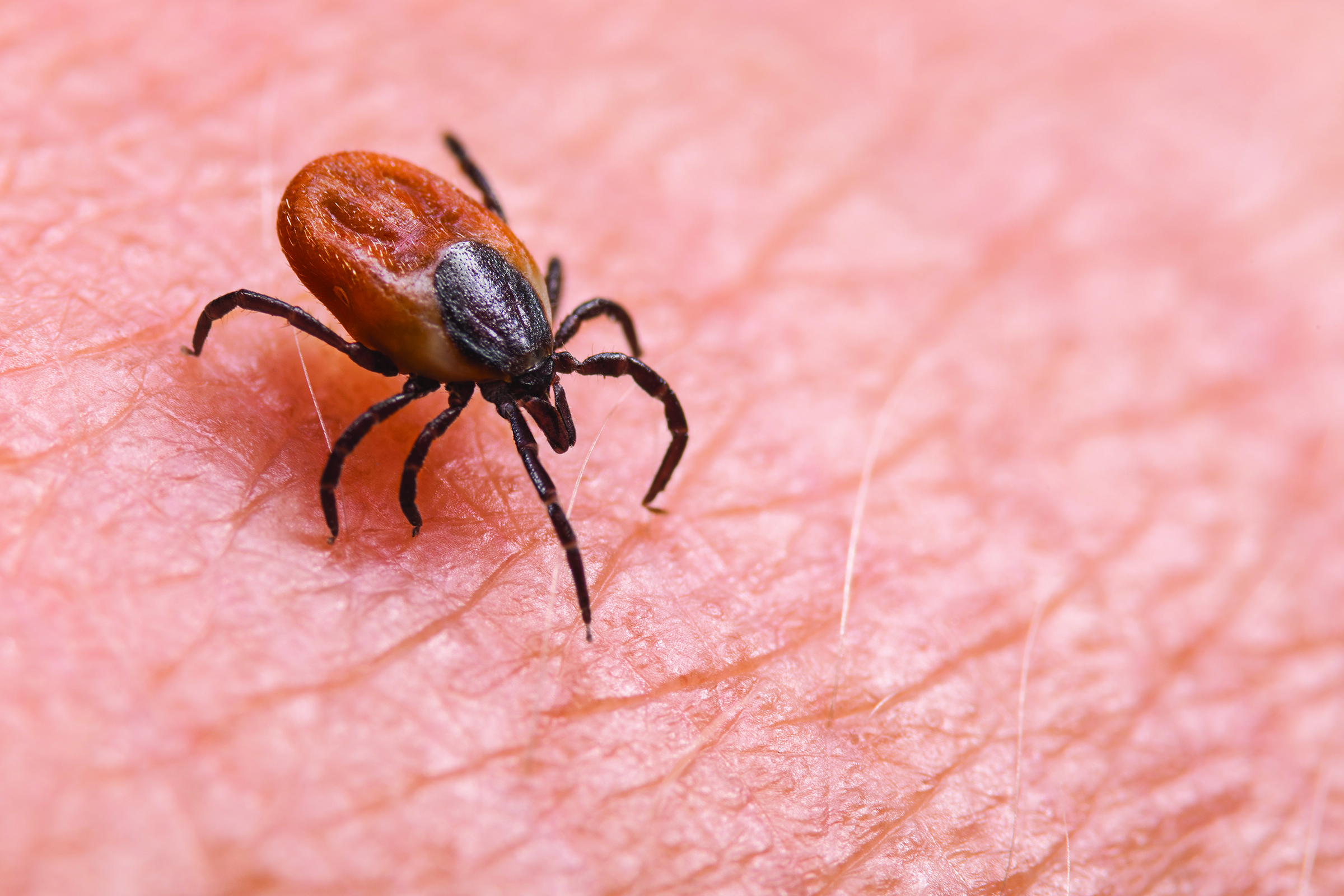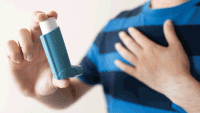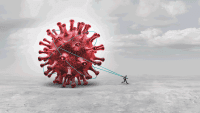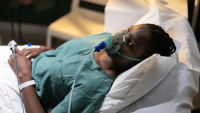Early suspicion aids prompt diagnosis and treatment.
- Approximately 63,000 cases of Lyme disease are reported each year.
- About 1% of individuals diagnosed with Lyme disease also will develop Lyme carditis.
- Suspicion for Lyme carditis should be considered when patients experience Lyme disease symptoms coupled with otherwise unexplained cardiac abnormalities.
Frank Rodriguez*, a 19-year-old college student, arrives at the campus student health clinic after feeling faint while out for his routine run. He tells Lisa, the health clinic RN, that during the run he had difficulty breathing and felt dizzy. Frank also says that over the previous 2 weeks he’s experienced increasing fatigue, persistent headaches, mild shortness of breath on exertion, occasional palpitations, and joint pain. He describes the pain as mild soreness in both shoulders and the right knee, which he rates as 4/10.
Lisa takes Frank’s vital signs, which are temperature 36.8° C (98.25° F), heart rate (HR) 52 beats per minute (bpm), respiration rate (RR) 18 breaths per minute, blood pressure (BP) 112/57 mmHg, and oxygen saturation 98% on room air. Frank answers no when Lisa asks if he’s experienced chest pain, fever, chills, abdominal pain, nausea, vomiting, numbness, weakness, or tingling. Lisa’s review of Frank’s other systems appears within normal limits.
Lyme disease prevention and treatment
As they continue to talk, Frank tells Lisa that 6 weeks earlier, when camping in a heavily wooded area, he received a tick bite. He describes pulling the tick off and then 3 to 4 days later noticing that the bite site had turned into a 7 to 8 cm red/purple bull’s eye rash. It resolved in 2 weeks. He didn’t seek medical attention. Based on the patient’s report and the nursing assessment, Lisa suspects that Frank has Lyme disease.
Lyme disease


Manifestations of Lyme disease include fever, chills, fatigue, headache, muscle and joint aches, and the classic bull’s eye (erythema migrans) rash. Because the bull’s eye rash can prove difficult to detect in persons of color, early identification requires a detailed history. The CDC estimates that 1% of individuals diagnosed with Lyme disease also will develop Lyme carditis. (See Bull’s eye.)
Lyme carditis
Suspicion for Lyme carditis should be considered when patients experience Lyme disease symptoms coupled with otherwise unexplained cardiac abnormalities. Specific symptoms of Lyme carditis include lightheadedness, syncope, shortness of breath, angina, heart palpitations, and dysrhythmias (such as AV block, left and right bundle branch blocks, and ventricular and supraventricular tachycardia). Lyme carditis can be associated with a host of other cardiac abnormalities and conditions, such as endocarditis, myocarditis, and pericardial effusion.
Diagnosis of Lyme carditis includes consideration of the patient’s geographical area and outdoor activities, clinical presentation, and laboratory and diagnostic testing. All patients with suspected or confirmed Lyme carditis should receive a 12-lead ECG, continuous telemetry monitoring, and echocardiogram. Serologic testing, including an enzyme-linked immunoassay, indirect fluorescent antibody, Western blot, or immunoblot test (to confirm the presence or absence of IgM or IgG antibodies), aids diagnosis.
Frank’s diagnosis
Frank’s symptoms (dizziness, dyspnea, low heart rate) and history of tick bite lead Lisa to suspect Lyme carditis. She urgently refers Frank to the nearby emergency department (ED) for further evaluation.
In the ED, Frank’s vital signs remain stable (temperature 36.6° C, HR 46 to 54 bpm, RR 18 breaths per minute, BP 118/68 mmHg, and oxygen saturation 97% on room air). A chest x-ray is within normal limits. A 12-lead ECG shows third-degree AV block with a junctional escape rhythm of 50 bpm.
Electrolytes, complete blood count, and liver enzymes are all within normal limits. Serologic testing, which includes a Western blot for IgG and IgM antibodies, is positive. The ED provider diagnoses Frank with Lyme carditis and admits him to a cardiac telemetry unit for treatment and continued monitoring.
Lyme carditis treatment
Early treatment with antibiotics can help limit cardiac complications and ensure a favorable prognosis. Patients diagnosed with Lyme carditis should receive oral or I.V. antibiotics for 14 to 21 days depending on illness severity. Standard antibiotic treatment for mild cases of Lyme carditis (first-degree AV heart block and a PR interval between 200 ms and 300 ms) includes oral doxycycline 100 mg twice a day, amoxicillin 500 mg three times a day, or cefuroxime 500 mg twice a day. Oral azithromycin is recommended as a second-line treatment. Individuals with severe forms of Lyme carditis (first-degree AV heart block and PR interval >300 ms, or second- or third-degree AV heart block) should receive I.V. ceftriaxone 2 g daily.
In addition to pharmacologic therapy, or depending on response to treatment, patients also may require temporary or permanent pacing. Providers should consider inpatient management for anyone with a PR interval >300 ms or other dysrhythmias.
Frank’s treatment
The provider considers a temporary transvenous pacemaker for Frank but then decides against it when he remains stable and his HR continues in the 50s. Instead, the provider orders a transcutaneous pacemaker and places it on standby. Frank remains hemodynamically stable throughout his hospital stay. A cardiac MRI demonstrates normal cardiac function and rules out inflammatory diseases of the heart, such as myocarditis, which can be a manifestation of Lyme carditis. The third-degree AV heart block requires a peripherally inserted central catheter and I.V. ceftriaxone 2 g daily for 3 weeks.
Nursing management
Nursing care of patients with Lyme carditis focuses on recognizing deterioration of the patient’s hemodynamic status due to cardiac dysrhythmias. To ensure prompt treatment and prevent further complications, the nurse should assess patients for shortness of breath, dyspnea, and angina, while frequently monitoring vital signs and cardiac rhythm. Nursing care also includes preparing for transcutaneous pacing.
Providing holistic care includes promoting wellness, evaluating disease impact on a patient’s ability to perform activities of daily living, and supporting the management of other health problems associated with Lyme disease. Nurses also should teach disease prevention strategies and early recognition and treatment of tick bites.
Disease prevention
Lyme disease prevention includes a combination of situational awareness and taking precautionary actions before outdoor activity. Many think tick bites as occurring only in wooded areas or among shrubs or high grass; however, they also can occur in backyards and parks.
The CDC recommends that patients apply tick repellant, such as 10% to 30% DEET (N, N,-diethyl-meta-toluamide), picaridin oil, or oil of lemon eucalyptus, before spending time outdoors in areas with an endemic tick population. Clothing, shoes, and outdoor gear should be treated with 0.5% permethrin. Wearing hats, gloves, long-sleeved shirts, and long socks pulled over pant legs when outdoors can help prevent exposure to ticks; light-colored clothing can make ticks more visible. Explain to patients that they should promptly shower and inspect the entire surface of the skin for ticks (including under the axilla and breasts) after outdoor activity.
Teach patients how to properly remove ticks. Using tweezers or a tick removal device, grasp the tick close to the skin and pull upwards; don’t twist the insect. After removing the tick, clean the site with soap and water. Advise patients to store the tick in the event it’s needed for species identification or additional testing. In addition, remind patients that pets also should receive tick prevention and be thoroughly inspected after spending time outdoors.
Early suspicion, good outcome
The best way to prevent Lyme carditis is to prevent Lyme disease. However, in the event of Lyme carditis, center nursing care on cardiovascular assessments and the hemodynamic stability of the patient so you can quickly identify cardiac dysrhythmias.
Frank remains stable and tolerates the I.V. ceftriaxone therapy. During his 1-week hospital stay, the patient converts to normal sinus rhythm with a resting HR in the 70s and AV block resolution. Frank is discharged with home nursing care to complete his I.V. antibiotic therapy and returns to college. Lisa’s early suspicion of Lyme disease and Lyme carditis ensured a good outcome for Frank.
The authors work at the University of Pittsburgh School of Nursing in Pittsburgh, Pennsylvania. Susan Miller is an assistant professor in the department of acute and tertiary care. Alice Blazeck and Melissa Harlan are assistant professors.
American Nurse Journal. 2024; 19(7). Doi: 10.51256/ANJ072424
References
Adams L, Evans MM, Riley K, Kowalchik K, Lucey M, DeSanto L. Living with Lyme disease: The nurse’s role in patient care. Nursing Made Incredibly Easy. 2021;38-45. nursingcenter.com/pdfjournal?AID=5936106&an=00152258-202107000-00008&Journal_ID=417221&Issue_ID=5935966
Carnazzo MC, Scholin C, Shweta FNU, Calvin AD. Lyme disease presenting as complete heart block in a young man: Case report and review of pathogenesis. IDCases. 2023;32: e1-e6. doi:10.1016/j.idcr.2023.e01799
Centers for Disease Control and Prevention. Lyme carditis. Published February 24, 2022. cdc.gov/lyme/treatment/lymecarditis.html
Centers for Disease Control and Prevention. Lyme disease: Data and surveillance. February 14, 2024. cdc.gov/lyme/datasurveillance/index.html?CDC_AA_refVal=https%3A%2F%2Fwww.cdc.gov%2Flyme%2Fstats%2Findex.html
Centers for Disease Control and Prevention. Signs and symptoms of untreated Lyme disease. January 15, 2021. cdc.gov/lyme/signs_symptoms/index.html
Centers for Disease Control and Prevention. Tickborne diseases of the United States: Tick bites/prevention. August 5, 2022. cdc.gov/ticks/tickbornediseases/tick-bites-prevention.html
Centers for Disease Control and Prevention. Ticks: How ticks spread disease. September 21, 2020. cdc.gov/ticks/life_cycle_and_hosts.html#:~:text=Ticks%20find%20their%20hosts%20by,tips%20of%20grasses%20and%20shrubs.)
Kaczmarek KA, Szwabe K, Urbanek I, et al. Prevalence of Lyme carditis in patients with atrioventricular blocks. Int J Environ Res Public Health. 2022;19(22):e1-11. doi:10.3390/ijerph192214893
Lantos PM, Rumbaugh J, Bockenstedt LK, et al. Clinical practice guidelines by the Infectious Diseases Society of America (IDSA), American Academy of Neurology (AAN), and American College of Rheumatology (ACR): 2020 Guidelines for the prevention, diagnosis, and treatment of Lyme disease. Arthritis Care Res. 2021;73(1):1-9. doi:10.1002/acr.24495
Nicholas P, Evans LA, Albert M, Kelly D, Michelson N. The nurse practitioner’s role in addressing chronic sequelae of Lyme disease as a climate change related disease. J Am Assoc Nurse Pract. 2022;34(3):579-85. doi: 10.1097/JXX.0000000000000670
Radesich C, Mestre ED, Medo K, et al. Lyme carditis: From pathophysiology to clinical management. Pathogens. 2022;11(5):582. doi:10.3390/pathogens11050582
Key words: Lyme disease, Lyme carditis, AV heart block, tick-borne illness


















